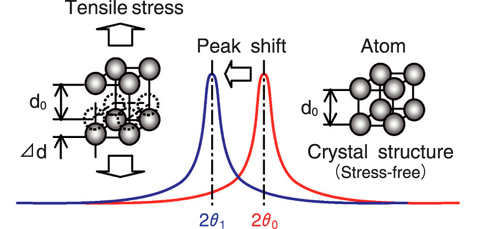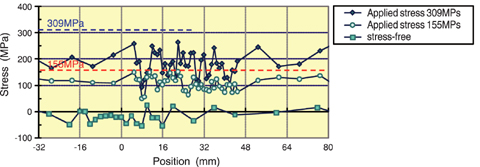
Fig.4-23 Principle of neutron strain measurement

Fig.4-24 Stress distributions on the rebar
Stress distributions in axial direction (loading direction) on a rebar with diameter of 16mm embedded in concrete of dimensions 50mm × 50mm × 800mm.

Fig.4-25 Layout of neutron strain measurement system
It is already known that the performance of a reinforced concrete structure is affected by the bond condition between the rebar and concrete, and this bond condition has been evaluated by evaluating the strain on the rebar. In general, strains on the rebar have been measured using strain gauges; however, waterproofing treatment and wiring of the strain gauges affect the bond condition, and strain gauges discretely set on the rebar cannot measure strain distributions in detail. On the other hand, the neutron diffraction method, which is nondestructive and non-contact, can measure the lattice spacing of crystalline materials (Fig.4-23), and residual stresses and strains inside materials at a depth on the order of centimeters can be evaluated from the change in lattice spacing with the spatial resolution on the order of a few millimeters. Although the water in hydrated cement and the evaporated water in the concrete structures would decrease the neutron intensity due to high absorption by hydrogen atoms, drying the water in the concrete makes it possible to measure the strains on the rebar in concrete with the size of 50mm to 100mm square.
Fig.4-24 shows the lattice stress distribution on a rebar in concrete, derived from measurements by the neutron diffraction method. The residual stress distributions in this figure were measured along the rebar under uniaxial tensile stress of 155 MPa and 309 MPa, as well as the stress-free condition, as shown in Fig.4-25. Stress transferred to the rebar increased with an increase in the applied stress, though it was less than the applied stress because stress was shared with the concrete. Moreover, dispersion of stress around cracks was observed due to loss of adhesion there and also due to stress concentration around rebars. These results clearly indicate that the neutron diffraction method enables detailed measurement of stress distribution on the rebar.
As indicated above, the neutron diffraction method is expected to make possible measurement of the detailed residual stresses on the rebar nondestructively and also to measure the stress distributions around cracks in the concrete which cannot be measured by strain gauges. There is a possibility that the neutron diffraction method will gives us new knowledge in the structural engineering field.